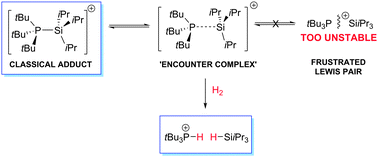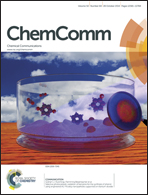Bypassing a highly unstable frustrated Lewis pair: dihydrogen cleavage by a thermally robust silylium–phosphine adduct†
Abstract
The thermally robust silylium complex [iPr3Si–PtBu3]+[B(C6F5)4]− (1) activates H2/D2 at 90 °C (PhCl); no evidence for dissociation into the separated Lewis pair is found. DFT calculations show H2 cleavage proceeds via Si–P bond elongation to form an encounter complex directly from the adduct, thus avoiding the non-isolable iPr3Si+–PtBu3 FLP.


 Please wait while we load your content...
Please wait while we load your content...